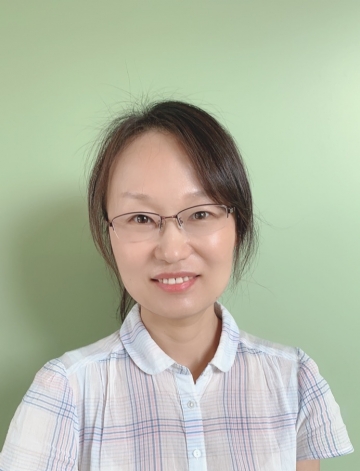|
Affiliation |
IWATE University Faculty of Science and Engineering Department of Science and Engineering Chemistry Course |
|
Position |
Associate Professor |
|
Laboratory Address |
〒0200066 UEDA4-3-5, MORIOKA CITY, IWATE UNIVERSITY, FACULTY OF SCIENCE ANF ENGINEERING |
|
Laboratory Phone number |
+81-19-621-6346 |
|
Mail Address |
|
SANG JING
|
|
|
Graduate School 【 display / non-display 】
-
-2012.09
Iwate University Graduate School, Division of Engineering Frontier Materials and Function Engineering Doctor's Course Completed
-
-2009.06
Others Graduate School, Division of Engineering Master's Course Completed
Degree 【 display / non-display 】
-
Iwate University - Doctor(Engineering) 2012.09.23
Campus Career 【 display / non-display 】
-
2022.04-2024.03
IWATE University Center for Hiraizumi Studies Associate Professor [Concurrently]
-
2020.04-Now
IWATE University Faculty of Science and Engineering Department of Chemistry and Biological Science Studies in Chemistry Associate Professor [Duty]
-
2020.04-2022.03
IWATE University Center for Hiraizumi Studies Associate Professor [Concurrently]
Research Areas 【 display / non-display 】
-
Nanotechnology/Materials / Composite materials and interfaces
Course Subject 【 display / non-display 】
-
2020
Chemistry and Bioengineering Laboratory 1
-
2020
"Exercises in Chemistry
-
2021
Graduation Research
-
2021
-
2021
Basic Seminar for the first-year students
Published Papers 【 display / non-display 】
-
Effect of thermal history control on mechanical properties of laser powder bed fusion maraging steel
Jingguang Du, Jinhui Huang, Chaolin Tan, Xusheng Yang, Linqing Liu , Yan Wang, Jing Sang, Di Wang
Materials Characterization 224 2025.04 [Refereed]
Academic Journal Multiple authorship
-
Electrical corrosion behavior and erosion mechanism of conductive hard films during current-carrying friction
Mingchong Lu, Jiahua Zhang, Peng Zhang, Qiwei Wang, Jing Sang, Hidetoshi Hirahara, Sumio Aisawa , Dexin Chen
Diamond and Related Materials 153 112018 2025.01 [Refereed]
Academic Journal Multiple authorship
-
Chemical Interaction at the Interface of Metal-Resin Bonding
35 ( 9 ) 290 - 294 2023.09 [Refereed]
Academic Journal Multiple authorship
-
Submicrometer analyses of the polymer flow modifier effects on metal–polymer direct joining
Shuohan Wang, Fuminobu Kimura, Weiyan Chen, Jing Sang, Hidetoshi Hirahara, Yusuke Kajihara
Materials Letters 347 ( 134655 ) 2023.06 [Refereed]
Bulletin of University, Institute, etc. Multiple authorship
Polymer modification is a promising approach to improve the joining performance of injection molded direct joining (IMDJ) technology. However, the factors contributing to the improved joining strength of submicron scale surface pattern joints have not been fully elucidated. In this study, we investigated the mechanism for improving the joining performance of polyamide 6 (PA6)/aluminum alloy A5052 joints with Blast + hot water treated metal structure using a flow modifier (OSGOL MF-11). Enhanced mechanical polymer infiltration at the submicron scale was confirmed, and the hydrogen bond generation at the joint interface was characterized. These findings elucidate the reason for the joining performance improvement caused by the flow modifier in the submicron scale.
-
Superhydrophobic coatings by electrodeposition on Mg–Li alloys: Attempt of armor-like Ni patterns to improve the robustness
Hongyuan He, Jiebin Du, Jing Sang, Hidetoshi Hirahara, Sumio Aisawa, Dexin Chen
Materials Chemistry and Physics 304 ( 127902 ) 2023.05 [Refereed]
Bulletin of University, Institute, etc. Multiple authorship
Due to the fragility of the layered structure, the mechanical properties of superhydrophobic surfaces, particularly wear resistance, are still too poor, limiting the industrial application of protecting magnesium-lithium (LZ91) alloys from corrosion. As a result, we’re testing screen-printed masks to electroplate armor-like Ni columns. Then, using electrodeposition, compact micro/nanometer-sized papillary structured superhydrophobic surfaces are created on Mg–Li alloys, which exhibit good low viscosity, self-cleaning, chemical stability, and excellent corrosion resistance with a 2 order of magnitude decrease in corrosion current density in both corrosive media. Surprisingly, increasing the deposition time causes the dissolution of Cu anode electrodes and the subsequent formation of Cu compounds on the superhydrophobic coating, resulting in the formation of dense needle-like structures on these papillae. Even after the superhydrophobic structures are worn away, the armor-like Ni col- umns reduce the contact angle’s tendency to decrease. This proposed deposition method provides a simple and fast process for protecting the surface of Mg–Li alloys, and the concept of armored Ni patterns may pave the way for future advances in the robustness and application of superhydrophobic coatings.
Books 【 display / non-display 】
-
Surface Modification Technologies for Polymer Materials
2023.08
Scholarly Book


